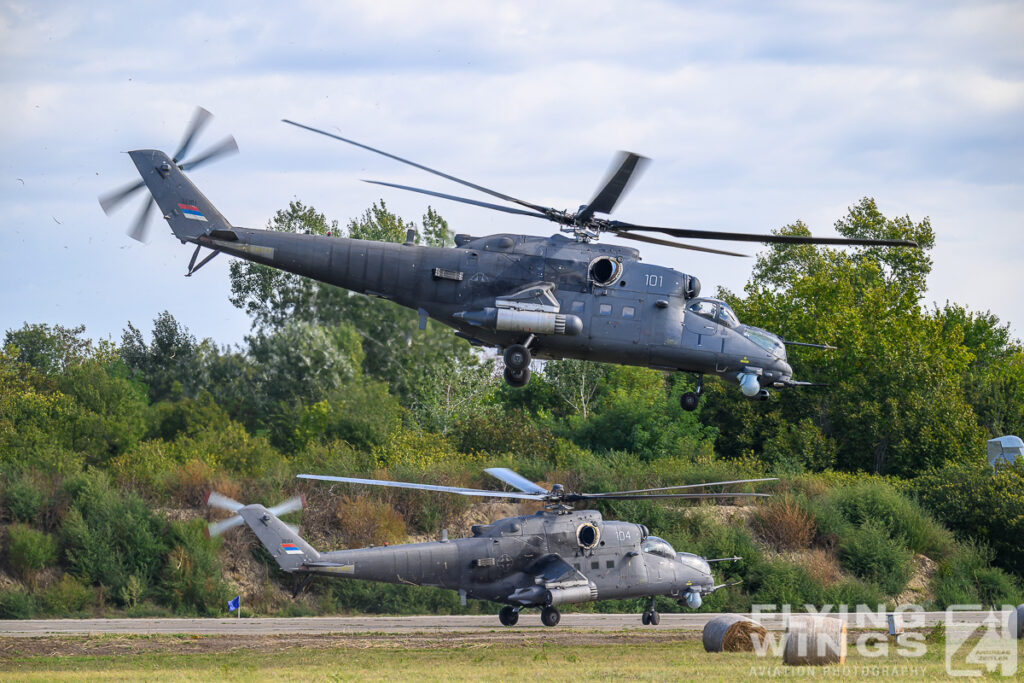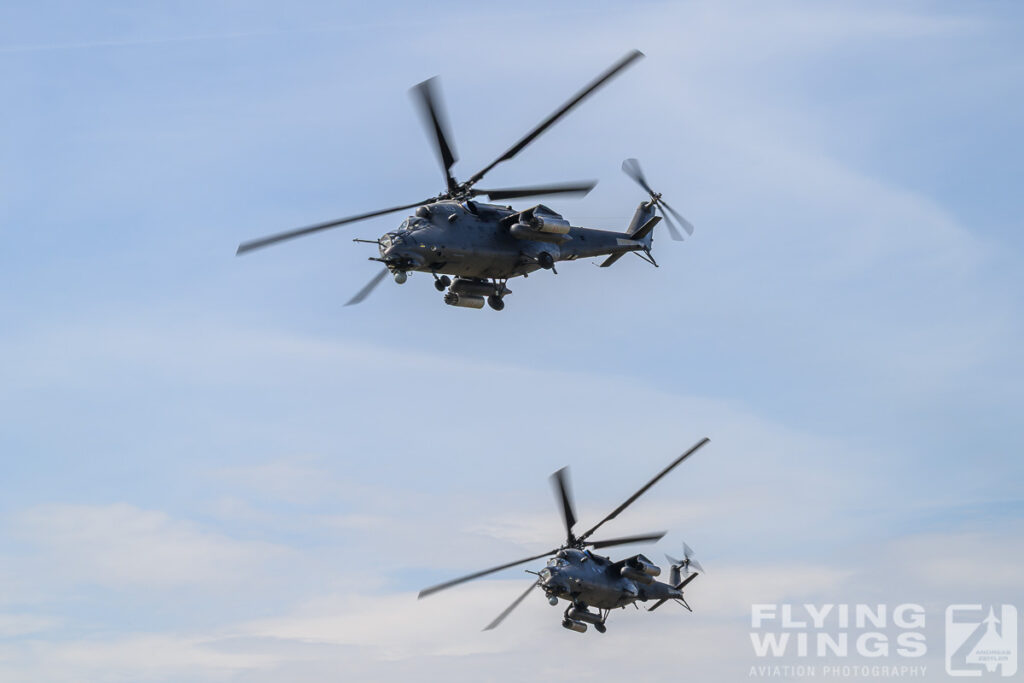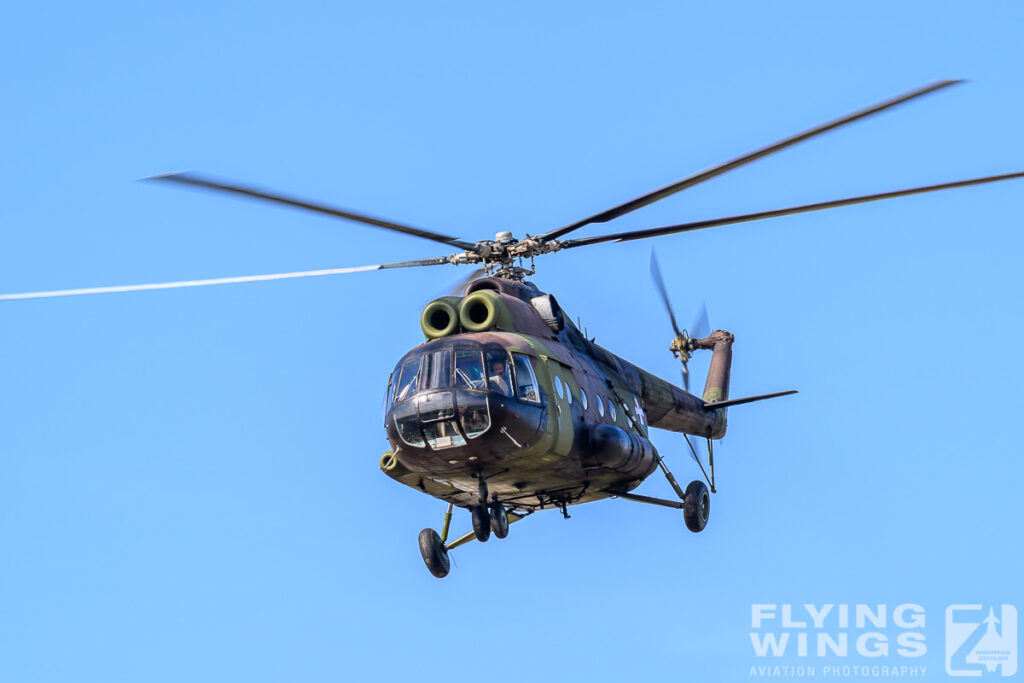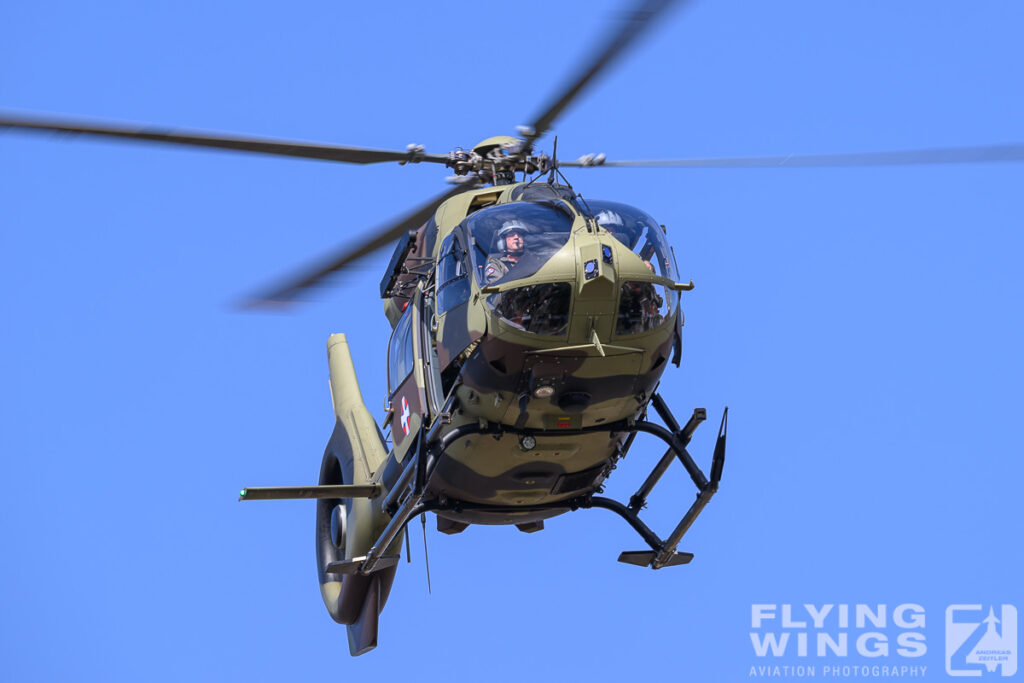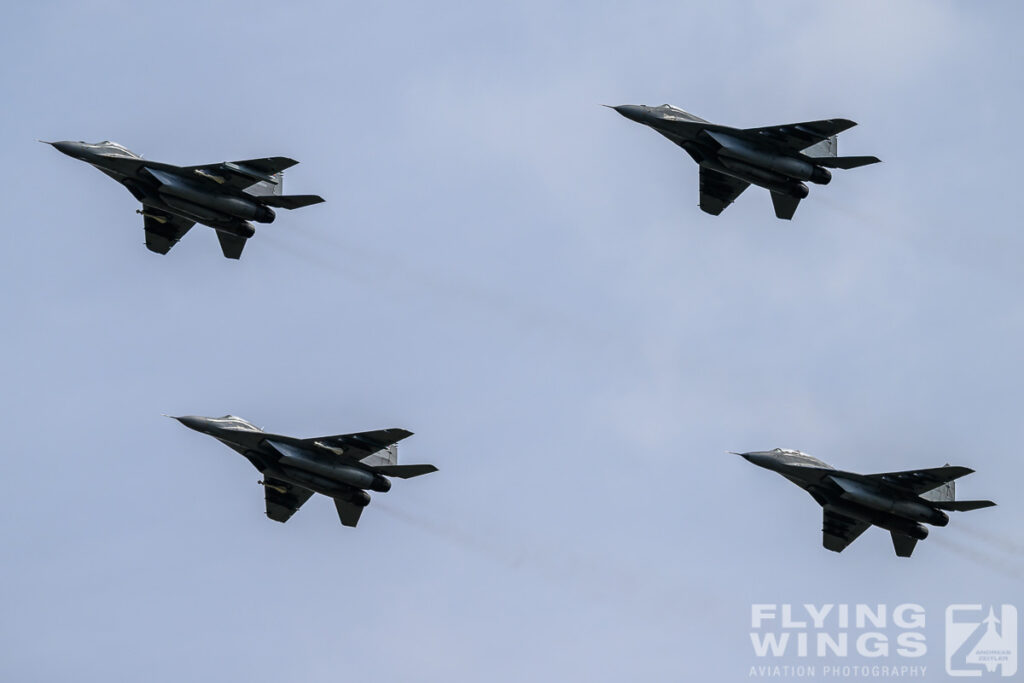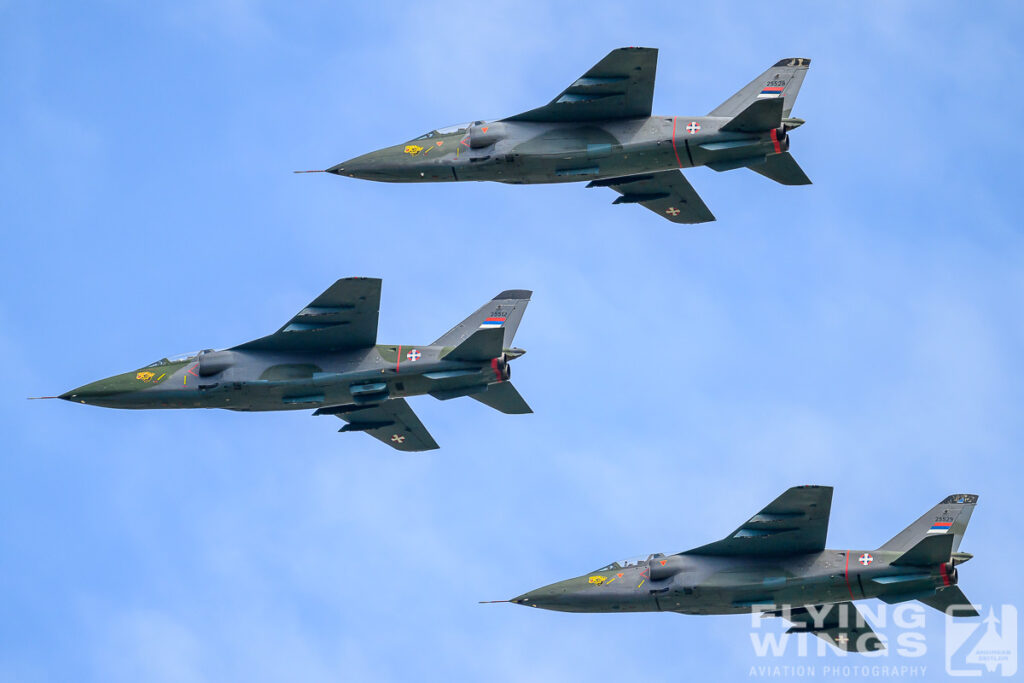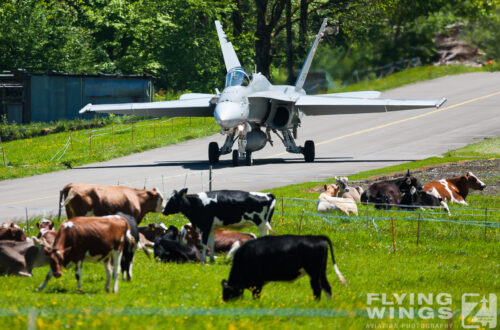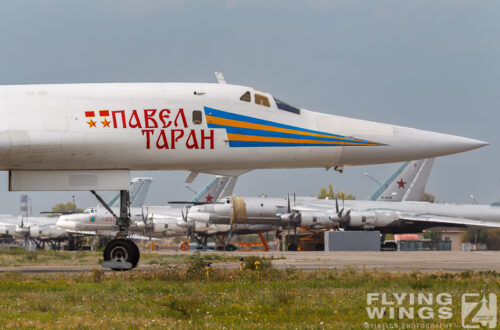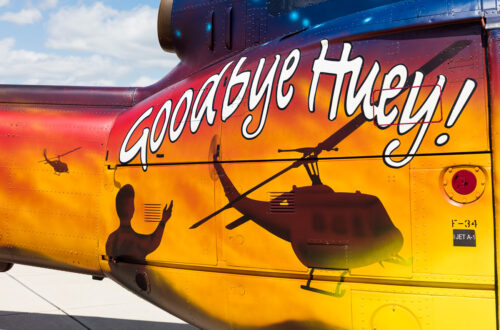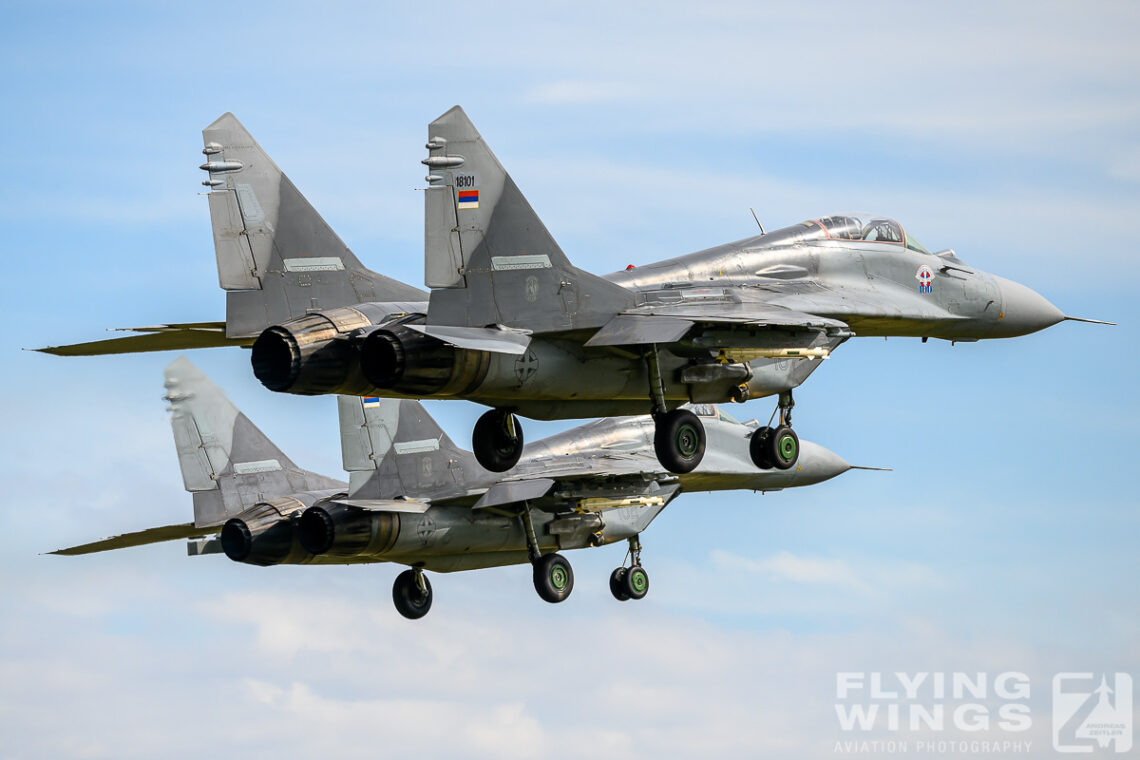
Serbia’s Flag 2024: Air Power Showcase with MiG-29s and Helicopter Strength
The Serbian Air Force and Air Defence (SAF&AD) confirmed its position as one of the most capable air forces in the Balkans during the “Flag 2024” event. Originally scheduled for September 15th to mark the Day of Serbian Unity, Freedom and National Flag, the event was postponed to September 20th due to weather conditions. Held at the “Colonel-Pilot Milenko Pavlović” military airport in Batajnica, northwest of Belgrade, the event welcomed thousands of visitors and provided an extensive display of Serbia’s military hardware, personnel, and operational capabilities.


More than 6,000 members of the Serbian Armed Forces participated, with around 2,500 vehicles, tanks, drones, and aircraft on display. This comprehensive exhibition gave the public a rare opportunity to see the SAF&AD’s inventory, including its fast jets, attack helicopters, transport aircraft, and domestic trainer/light attack planes, highlighting both operational readiness and modernization progress.
MiG-29 Fulcrums Dominate the Skies

One of the main highlights of “Flag 2024” was the MiG-29 Fulcrum aerial display. Serbia currently operates 14 MiG-29s across several variants, including the lzdeliye 9.13, 9.12A, 9.12B, and twin-seat 9.51 versions. These aircraft performed mock dogfights and an interception demonstration against a Serbian Airbus C295MW transport aircraft, showcasing the fleet’s combat capabilities. Recent upgrades have brought most aircraft to the MiG-29SM standard, equipping them with advanced R-77 and R-27ER air-to-air missiles, Kh-31P anti-radiation missiles, and guided air-to-ground ordnance. The additionally installed L-150 Pastel radar warning system and ECM pods are clearly visible from the outside, reflecting Serbia’s trust in this platform and its efforts improve their enhance situational awareness and survivability even more.



Despite these enhancements, the MiG-29s are nearing the end of their operational life. Maintenance challenges, limited access to spare parts due to the Russian-Ukrainian conflict, and regional comparisons—such as Croatia’s upgrade to Dassault Rafales—have prompted Serbia to plan the acquisition of the Rafale. This transition will also lead to the eventual retirement of the Soko J-22/NJ-22 Orao, which is unique to Serbia and used as a ground-attack aircraft. During the event, all two-seat NJ-22s were displayed, either on ground or participating in fly-bys. Oraos have also been upgraded and are now featuring newly installed thermal imaging cameras and laser rangefinders in the NJ-22M upgrade program.
Helicopter Fleet Highlights Versatility


Helicopters formed a major part of the demonstration. Serbia’s 14 Airbus H145M helicopters, divided between combat search and rescue (CSAR) and ground-attack variants, showed their operational versatility. The D-3 batch with five-blade main rotors represents the latest upgrades and includes integration with the HForce 3 weapon system, adding electro-optical sensors and enhanced firepower. Mil Mi-35M/P Hind attack helicopters were also prominently displayed. Four Hinds arrived in 2019, with an additional eleven acquired from Cyprus, six of which were showcased at the event. These “flying tanks” are capable of anti-armor operations with guided and unguided weapons.


The veteran Gazelle GAMA helicopters, built under Yugoslav license, were also present. Despite being developed in the 1970s and 1980s, domestic upgrades allow them to carry 9M14M Malyutka anti-tank missiles and continue to operate alongside newer Hinds and H145Ms. Complementing these combat helicopters, Serbia’s Mi-17V-5 Hips and Mi-8s were presented, configured with gun pods and unguided rocket launchers to demonstrate multi-role capabilities. These combined displays highlighted Serbia’s focus on maintaining a balanced and versatile rotary-wing fleet.
Transport and Light Attack Aircraft
On the transport side, two Airbus C295MW medium transports have replaced the last Antonov An-26, marking a shift toward Western-built aircraft. The Utva Lasta trainer/light attack aircraft was also displayed, demonstrating Serbia’s ongoing commitment to domestic aircraft production and pilot training independence. The Lasta can be armed with small bombs and unguided rockets, providing light ground-attack capability while supporting pilot training for future generations of Serbian aviators.

Advanced Air Defence Systems
Serbia’s air defence ambitions were underscored with the display of the Chinese FK-3 surface-to-air missile system, comparable to the Russian S-300 or U.S. Patriot systems. Contracts for additional Chinese HQ-17AE SAM systems were signed recently, while CH-92 and CH-95 armed drones complement Serbia’s layered defence strategy. This mix of domestic and international systems demonstrates Serbia’s intent to remain largely independent in defense matters, avoiding reliance on a single source while modernizing its armed forces.



Modernization and Regional Implications
“Flag 2024” clearly illustrated Serbia’s modernization trajectory. With advanced helicopters, upgraded MiG-29s, and plans to acquire Dassault Rafales, the SAF&AD is strengthening its capabilities across air superiority, ground-attack, and transport missions. The event also signaled the likely phasing out of older aircraft such as the MiG-29s and J-22s over the next few years. Strategically, these upgrades position Serbia as a capable and adaptable regional military power, ready to defend its sovereignty and maintain operational independence amid evolving geopolitical challenges.
Conclusion



“Flag 2024” was not only a spectacle for aviation enthusiasts but also a demonstration of Serbia’s commitment to a modern, capable air force. With over 50 aircraft in action, including fast jets, attack helicopters, and transport planes, as well as advanced missile and drone systems, Serbia showcased its growing military capabilities. The upcoming arrival of Dassault Rafale fighters, coupled with ongoing helicopter upgrades and domestic aircraft production, ensures that the SAF&AD will remain a versatile and formidable force in the Balkans for years to come.
Flag 2024 – Batajnica Airbase – Photo Gallery
A more extensive version of this report with in-depth coverage has been published in Air Forces Monthly magazine 12/2024.



